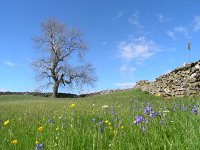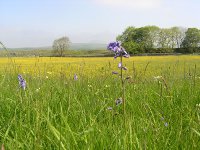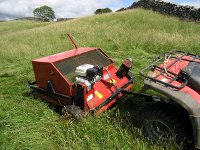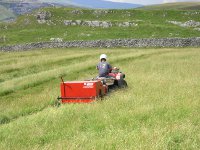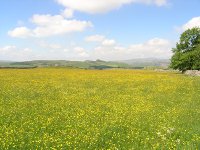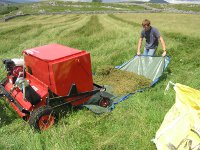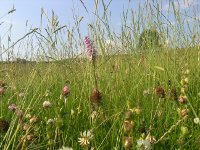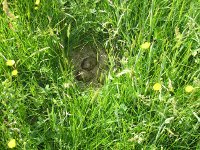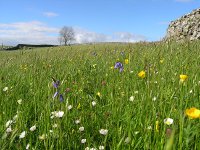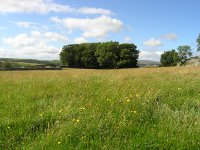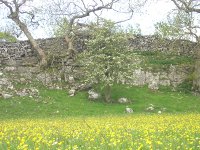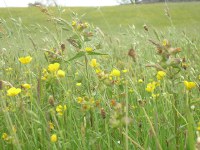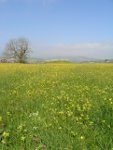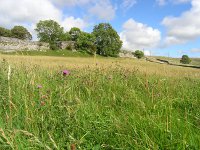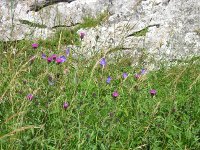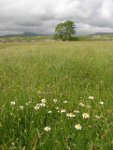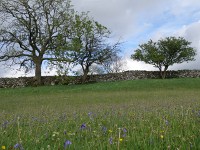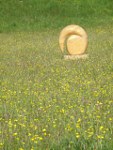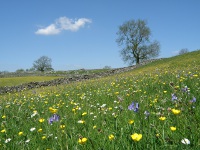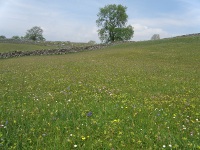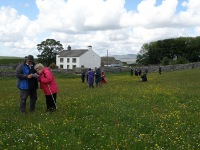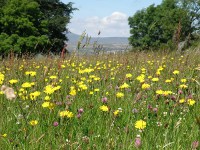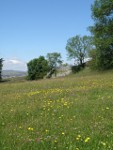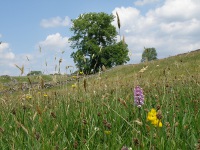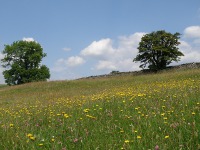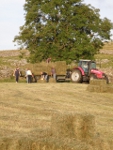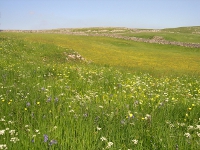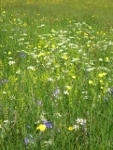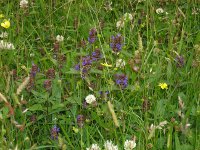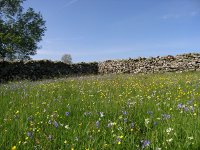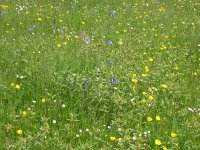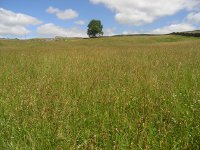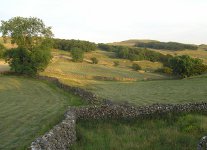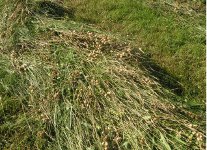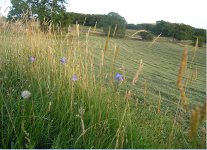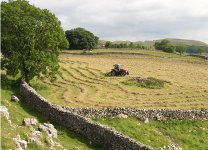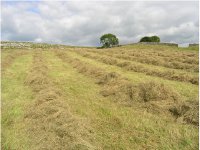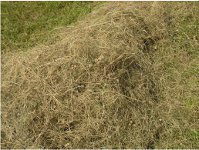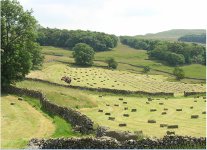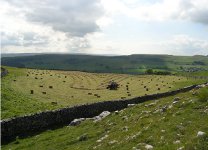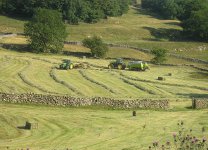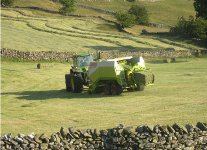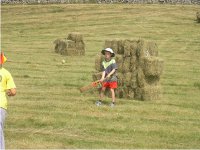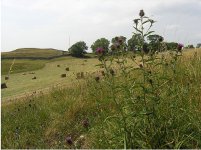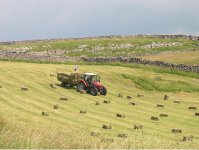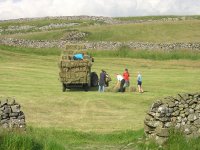Hay Meadows at Lower Winskill.
The hay meadows at Lower Winskill are used for making hay to feed livestock over winter.
Today they are a nationally rare habitat rich in wild flowers and insects, especially butterflies and bumblebees.
The hay meadows at Lower Winskill are recorded in late sixteenth century documents when they belonged to three smaller farms. These farms were basically small dairy farms each with a few cattle kept inside over winter in stone built barns. Small scale dairy farms became widespread in the Yorkshire Dales in the sixteenth and seventeenth centuries. Milk cows were kept all year round on the farms, and their milk made into cheese and butter. The farmhouses nearly always contained a purpose built dairy where the cheese or butter was made. The cheese and butter was stored and sold on to feed growing urban and industrial populations. The development of this upland dairying economy needed ever more hay meadow to produce food for the milk cattle which were kept inside from early November to early May each year.
The presence of bluebells in the hay meadows at Lower Winskill is especially interesting. Bluebells and other wild flowers such as wood anemone, wood cranesbill and primrose suggests the meadows formed at a time when the locality was wooded, and some of the plants which originally grew in open woodland have been preserved as part of the meadow flora. It is very likely that this woodland was managed as wood pasture, and the meadows were created and enclosed where there were deeper and more fertile soils. The annual cycle of upland hay meadow management is the key to understanding how plants which naturally grow in open woodland survive as part of the meadow flora.
The annual cycle of upland hay meadow management begins in the spring when the meadows are grazed by lambing sheep so that the first flush of grass is eaten by the ewes and lambs. This is very important as it prevents the taller grasses shading out the wild flowers which begin to grow a bit later. These include bluebells and other wild flowers originally present in woodland. It also encourages the growth of wild clover which naturally promotes soil fertility by fixing nitrogen in the soil. In mid-May after a few weeks of spring grazing, the ewes and lambs are taken out of the meadows which are then "shut up" to let the grass grow to make into hay in July. This provides the vital window of opportunity for the wildflowers normally found in woodland to flower without being shaded out by grasses and gives them protection from grazing by livestock.
Related Articles
- Hay Meadow Flowers (1.59Mb .pdf)
- Tom Lord and Peter Vincent (2009);
Dating the Dales Hay Meadows;
Dales Heritage, Issue 11, p. 10.
Available here (791Kb .pdf) - Lower Winskill Meadow Restoration Events 2003-4 (4.82Mb .pdf) with Flora locale.
- Lower Winskill Meadow Restoration Events 2003-4 Photos (4.44Mb .pdf) with Flora locale.
Gallery
Below you will find a gallery with some pictures of the meadows, haymaking and wild flowers. If you rest your mouse over a picture it will give you a description of that picture. Click any of the pictures for a closer view.



